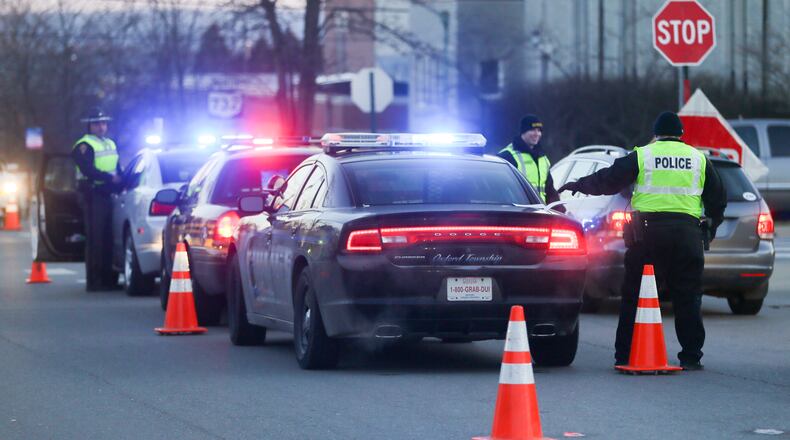Of the drivers who tested positive for drugs, more than a third had used marijuana, and more than 9 percent had taken amphetamines. The report didn’t mention opioid use, but the opioid epidemic — including heroin, fentanyl and prescription drug abuse — clearly has been a major factor in drug-related crashes, especially in this region, according to Cindy Antrican, a spokeswoman for AAA.
RELATED: Driving while high: Drugs are possible factor in more recent crashes
“We’re at ground zero for the drug crisis. It’s definitely worse here,” Antrican said, noting that Dayton was recently named the most drugged-out city in the nation by ArrestRecords.com, based on 2014 state public health records for drug deaths per capita.
Heroin and other opioids have been a factor in numerous crashes in the area, including a collision in early February that killed two Greene County residents on Old U.S. 35 in Xenia Twp. Heroin was found in a car believed to have crossed a double-yellow line, colliding head-on with a minivan, killing both drivers, according to police. Alcohol was also believed to be a contributing factor.
Marshall Dutton, 21, of Waynesville was sentenced in March to five years in prison for an August 2016 fatal wreck he caused on Interstate 75 near Middletown that killed a Kentucky man.
Toxicology lab reports concluded that Dutton was under the influence of several drugs at the time of the crash, including marijuana, cocaine, Xanax and morphine. Two straws containing Ecstasy residue were also found in Dutton’s vehicle.
Last week, an accident that backed up traffic for miles on Interstate 75 in Miami County was caused by a man who overdosed on heroin. In that case, no one was killed.
RELATED: Ohio highway signs alert drivers of drugged driving problem
Ohio has seen a 25 percent increase in drugged-driving crashes since 2012, and there were 3,574 drugged driving crashes in 2016, accounting for about 33 percent of all impaired-driving crashes, according to the Ohio Department of Transportation.
Those numbers are compounded by the fact that many unimpaired victims simply weren’t paying attention while driving, Antrican said.
“You have the deadly duo here,” she said. “You have distracted drivers combined with the drugged drivers. Your best defense against these drugged drivers is to be a good defensive driver, and you can’t do that if you’re looking at your cell phone or otherwise distracted behind the wheel.”
The majority of Ohio motorists now view people driving after using illegal drugs as a bigger threat to their personal safety than those driving after using alcohol, according to a recent AAA survey.
Three out of four motorists surveyed said the use of illegal drugs before driving was a “very serious threat” to their safety compared to 66 percent who said the same thing about people driving after drinking alcohol, which has been on the decline nationally.
RELATED: Workers under employers' watch for opioid abuse
However, unlike drunk drivers who tend to be pulled over at night, drugged-drivers are a consistent threat day and night, Antrican said.
“The police are telling us they’re starting to make more OVI stops and arrests during the day than they are at night,” she said. “Many heroin addicts are gainfully employed. But they get up, and they use on their way to work. The police call it the heroin rush hour.”
AAA offers these tips to reduce drugged driving related traffic crashes and fatalities:
• If you find yourself substance-impaired and unable to drive, call a cab or someone to pick you up.
• Do not hesitate to take the keys from friends or family members who may be impaired.
• Never ride as a passenger in a car driven by someone who is impaired by a substance.
• If you encounter an impaired driver on the road, keep a safe distance and ask a passenger to call 911, or pull over an call 911 yourself.
About the Author
